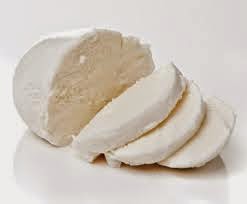The Indian Cheese Industry
The organised cheese industry in India is at best in its nascent stage, accounting for under 1% of total dairy production and largely limited to urban consumption. Though cheese was first marketed under the brand name 'Amul', from the popular Amul butter stable in the late 1970s, it attained an
identity of its own only as late as 1990s.
The organized cheese industry in the country as of 2006, is valued at Rs 250 crore (US$ 50 million), with a volume in excess of 8000 tonnes. The industry growth rate is estimated at about 10%-12% per year in terms of volume and 16%-17% per year in value terms. Current household cheese penetration is 5%, with about 50% of consumption being limited to cities. Mumbai and Delhi together capture half of the cheese market. Within cheese products, around 60% of the market is dominated by processed cheese, 30% by cheese spreads and the remaining 10% by flavoured and specialty cheese.
here have been two significant changes in consumption
patterns, affecting each end of the spectrum. In the mass consumption category,
Indian consumers are more ready to buy off the shelf. Paneer, which all the
major cheese producers are marketing as a branded product, was traditionally
home made. Secondly, with greater international exposure, rising incomes and
brand affiliation; the demand for niche cheese products has increased. Amul was
an early mover in capitalizing on the demand for specialized cheeses like Gouda
and Emmental. However, cheese consumption continues to be an urban phenomenon,
with processed cheese and cheese spreads accounting for about 80% of the total
cheese consumption. Also, cheese is mostly consumed by children and is yet to
be part of the mainstream adult diet on a mass scale.
Increasing and Widespread
Demand
Based on a multi-year study of dairy consumption patterns in China, Mckinsey predicts a growth in the demand for Cheese by 40% by 2011. With India having similar consumer trends- namely, growing incomes, westernization and urbanization - Indian demand is likely to mirror Chinese patterns. Two conspicuous
outcomes are: i) There is likely to be a 25%-30% increase in demand
in the metros and ii) There is likely to be a 5%-10% growth in demand in tier 2
cities as urbanization and modern consumption patterns extend to these cities.Based on a multi-year study of dairy consumption patterns in China, Mckinsey predicts a growth in the demand for Cheese by 40% by 2011. With India having similar consumer trends- namely, growing incomes, westernization and urbanization - Indian demand is likely to mirror Chinese patterns. Two conspicuous
In the past couple of years, for example, Mother Dairy has already been pursuing aggressive advertising strategies. One successful promotion in Delhi and Mumbai was the "Cheese khao superhero ban jao" (Eat Cheese to become a Superhero) event, where kids buying cheese at retail outlets were invited for a photo- op - dressed as superheros with a framed photograph presented to them. Another, helped the company bond better with its retailers. In November 2005, retailers in Delhi displayed banners proclaiming, "Cheese ke saath bees ki cheez" (Buy Cheese and get Rs. 20 worth of freebies), a proposal where, if a consumer bought Mother Dairy cheese, the retailer would offer her free purchases worth Rs 20 from the store. Both these innovative campaigns were hugely successful in brand awareness and sales.
'Indianization' of processed cheese
Dabon, in acknowledgement of customer preferences for indegenous cheese, has customized their portfolio to include paneer.
The next three years will see new Indian flavours of cheese being introduced in the processed cheese and
cheese spread market. The Indian consumer has unique tastes with variations even across regions. Both Indian and International brands are likely to 'Indianize' their cheese products with Indian flavours to attract a larger customer base.
Consumption Patterns
The product mix and consumption pattern is unlikely to change drastically in the next few years. The largest
demand will continue to be for processed cheese and cheese spreads. Children will continue to be the largest consumers of cheese.
Of the predicted increase in demand, children will contribute to the largest proportion in tier 2 cities while it will be adults in the metros. To cater to this increase, it is also likely that cheese producers introduce new varieties of specialty cheese in the metros.
 Tel :+918554015860
Tel :+918554015860 fb
fb



.jpg)
.jpg)









.jpg)

.jpg)
Thanks for sharing useful information. If Want to start a business in Dairy Farm then Buy Paneer Plant because these machine run automatic and gives more profit
ReplyDelete